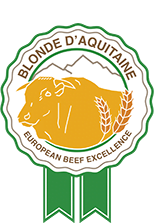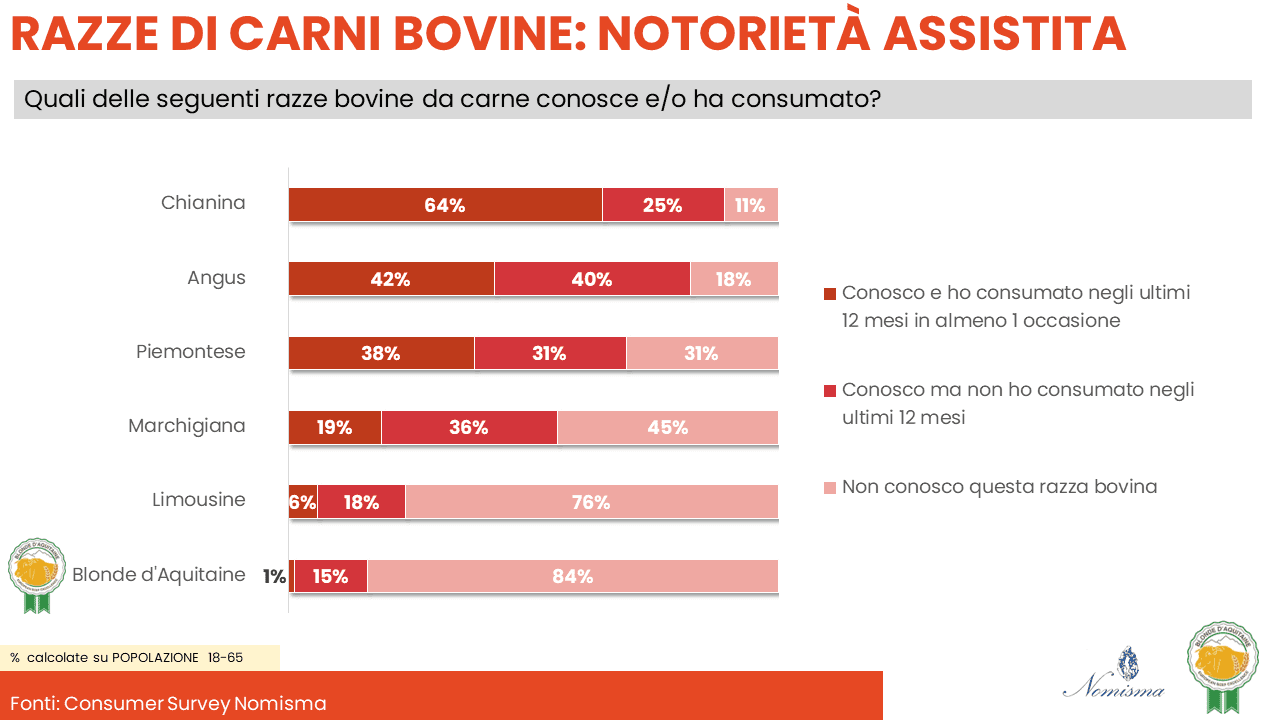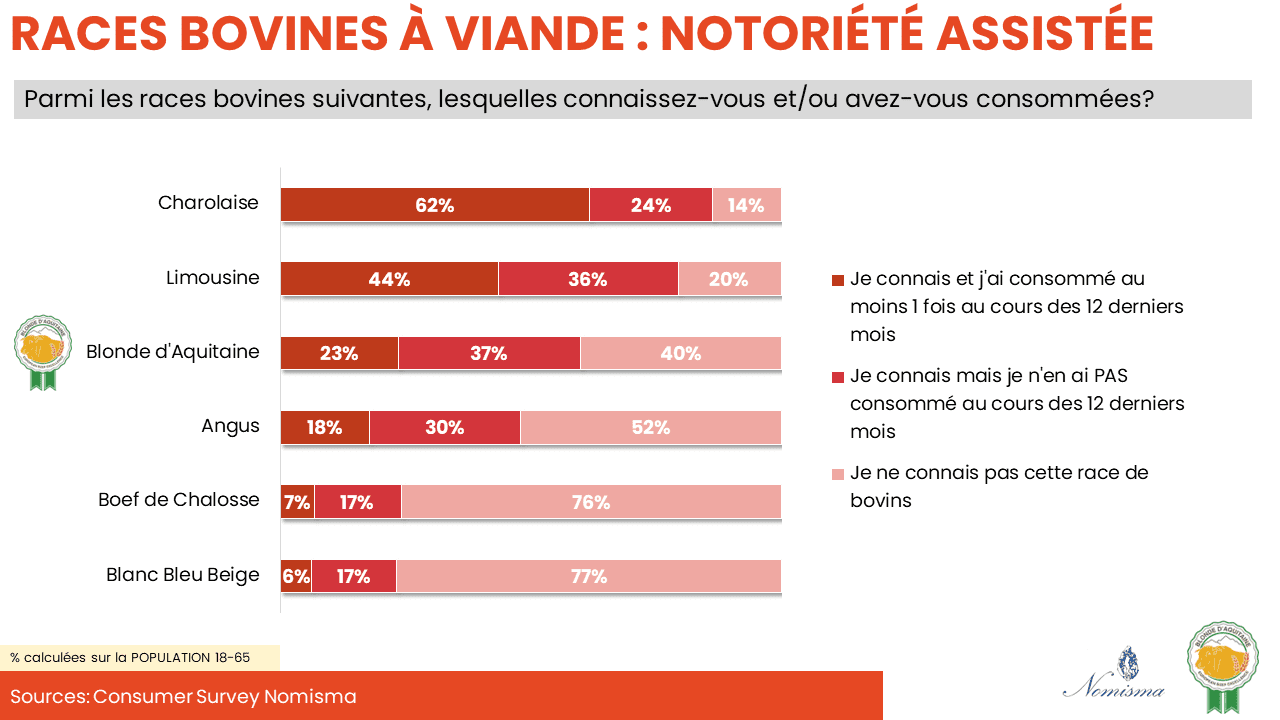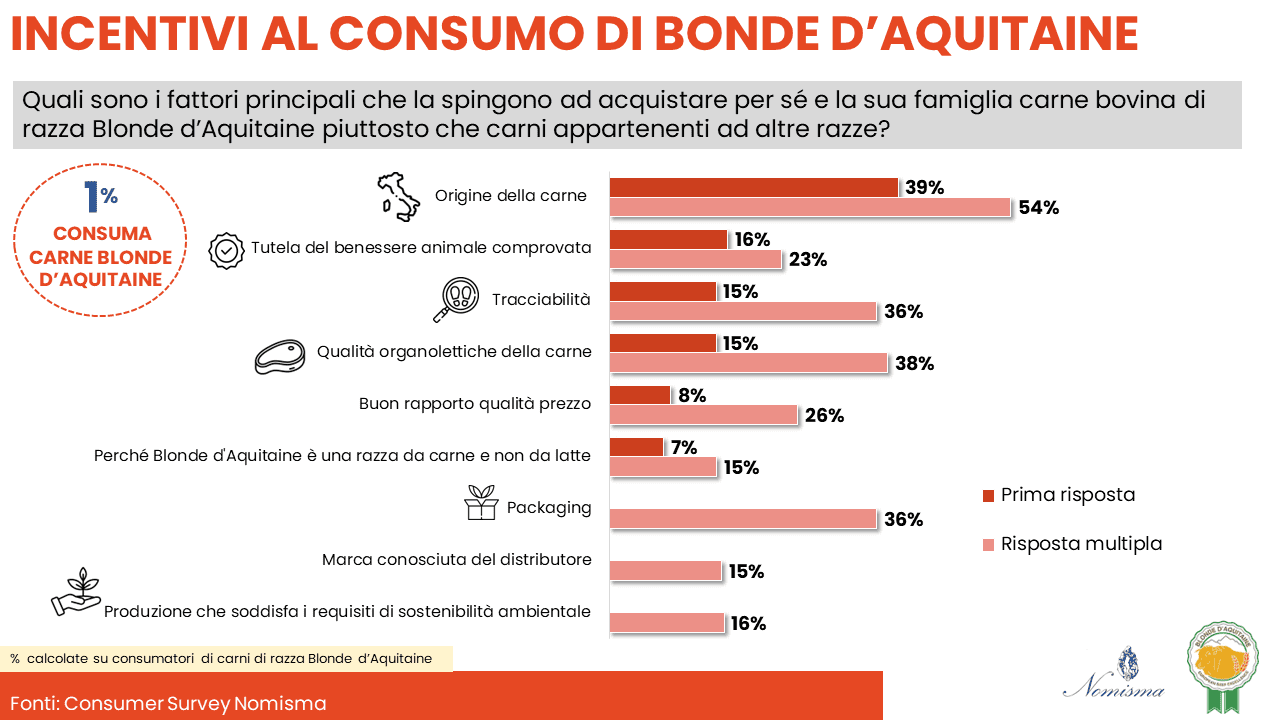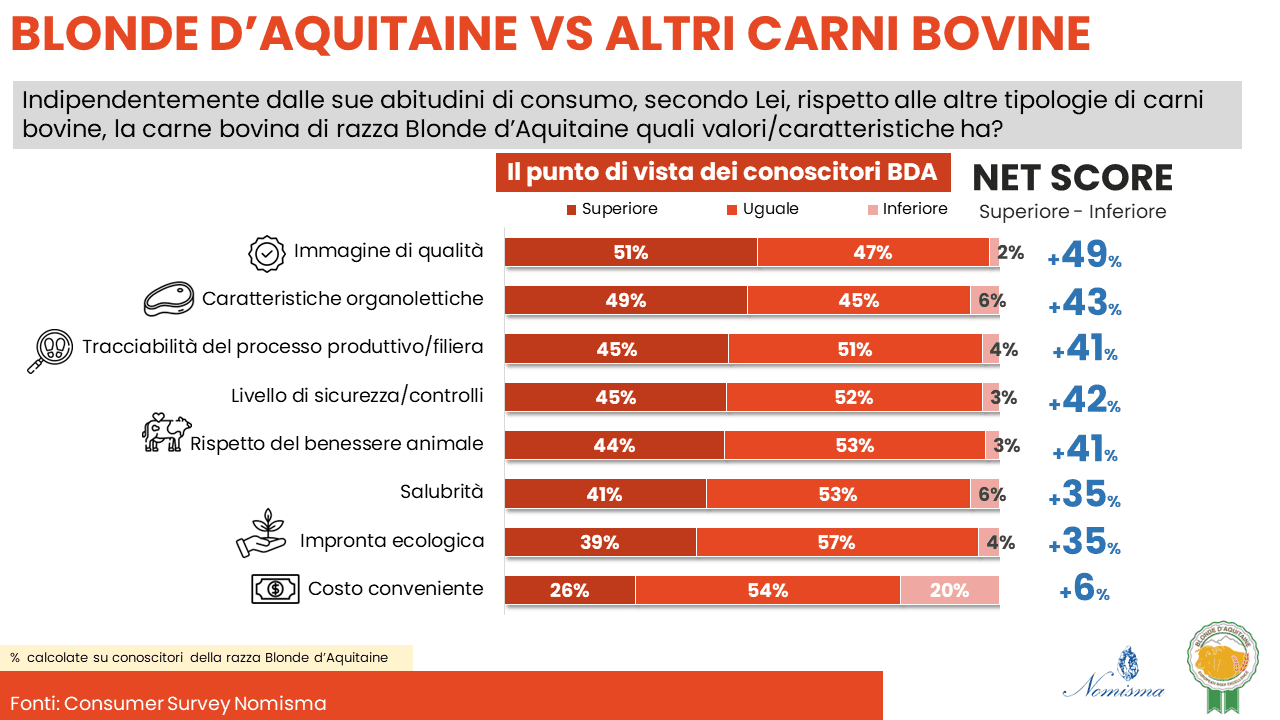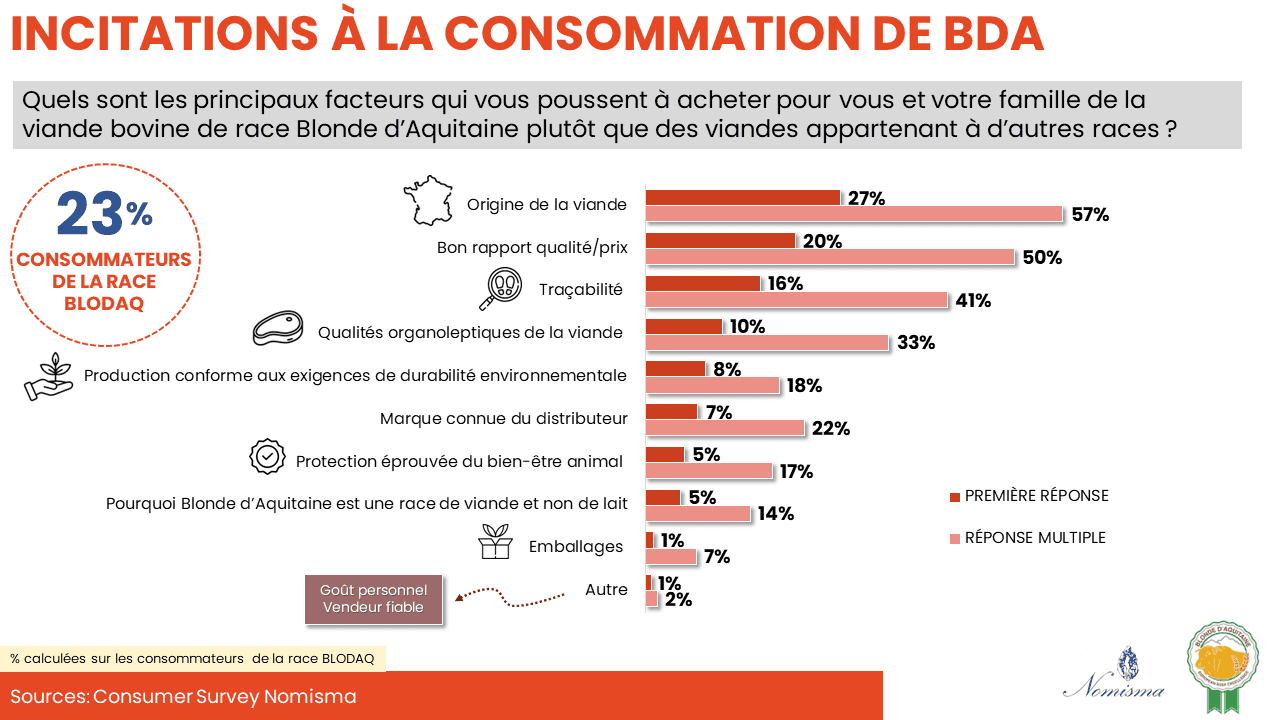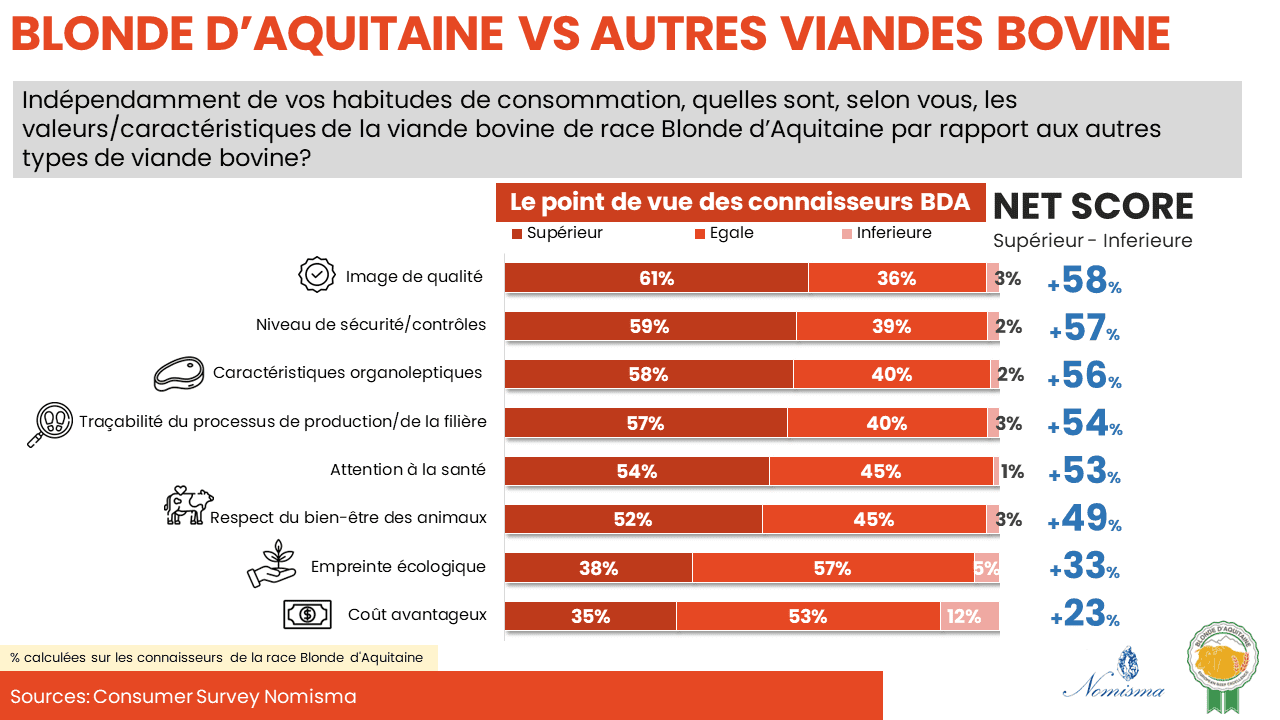
Nomisma, a company offering economic research and market intelligence, evaluations, decision support tools, strategic advisory and consulting services, has collected the results of the first Consumer Survey for Blonde d’Aquitaine: European Beef Excellence, a project co-financed by the European Union and co-managed by Asprocarne Piemonte and France Blonde d’Aquitaine Sélection with the aim of promoting Blonde d’Aquitaine beef in Europe, particularly in Italy and France.
Thanks to its consolidated expertise in the agri-food sector, Nomisma carried out a study as part of the monitoring and evaluation activities of the new three-year EUBLODAQ2 project (after the first three-year project 2020-2023).
The survey outlines and deepens beef consumption habits, with a detailed focus on the knowledge and consumption of the Blonde d’Aquitaine breed in Italy and France, and was carried out on a representative sample of consumers aged between 18 and 65 years in both countries.
So how many people know this particular cattle breed today?
In Italy only 16% know Blonde d’Aquitaine meat, while in France the familiarity is growing considerably, with 3 out of 5 French people who know it.
The perceptions, along with the purchasing motives, that drive consumers to choose Blonde d’Aquitaine meat are linked to the reputation of the product’s quality and its strong bond with the regions from which it comes.
In Italy, regular consumers of Blonde d’Aquitaine state that they buy it mainly because of its origin (39%), its proven concern for the welfare of cattle on farms (16%), its traceability and its organoleptic qualities (both mentioned by 15% of consumers).
It should be noted that among Italians who know the Blonde d’Aquitaine the perception is clearly positive: about one out of two Italians considers it superior to other beef in various aspects, especially from the point of view of its quality image, organoleptic characteristics, but also in the traceability of the production process and the supply chain and in the level of security and controls.
In the French market as well, its origin is the characteristic that most directs consumers towards purchasing Blonde d’Aquitaine meat (27%), followed by the good quality/price ratio (20%) and its traceability (16%).
And in a market such as the French one where this beef is better known and consumed, its excellent perception compared to other beef is confirmed: in France it is perceived better than other beef cattle breeds primarily in terms of its quality image, but also in terms of the level of safety and controls, its organoleptic characteristics and the traceability of the production process and the supply chain.
And the quality of Blonde d’Aquitaine meat is confirmed not only by regular consumers, but also by connoisseurs and occasional consumers who know it and recognize its distinctive characteristics and the high profile of its image and product.
The three-year EUBLODAQ2 campaign aims precisely to spread the knowledge of this beef’s peculiar characteristics among Italian and French consumers, making people more aware of their purchasing choices. Today, almost 4 out of 10 French people and only 1 out of 10 Italians are aware of the fact that Blonde d’Aquitaine beef meets high quality and food safety requirements, to guarantee farm animal welfare and to protect the environment, ensuring the sustainability of the product. This shows that, despite the different current levels of awareness, widespread information activities are useful in both countries to promote the excellence of the beef sector.
With this first Consumer Survey as part of the monitoring and evaluation activities of the EUBLODAQ2 project, Nomisma has also highlighted data and results related to other aspects and issues of great interest which we will explore and publish in the next articles. Stay tuned for future updates!
